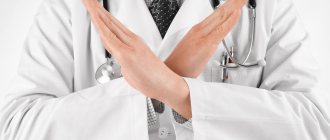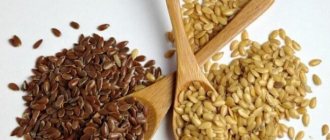Antibiotics are now very widely used in the treatment of many severe infections and inflammatory lesions that cannot be treated with standard therapy. These include the new generation drug Amoxiclav. But along with its undeniable effectiveness, it also has side effects - nausea, loss of appetite, diarrhea. Diarrhea from Amoxiclav is the most problematic complication, causing significant discomfort. Therefore, it is so important to know how to quickly reduce or eliminate loose stools after antibiotic therapy.
Indications for taking antibiotics for diarrhea
There are specific indications for prescribing antibacterial therapy against the background of diarrhea.
This applies to cases where stool liquefaction was caused by a bacterial disease:
- Salmonellosis.
- Cholera.
- Dysentery.
If diarrhea is a consequence of a viral infection, then you should stop taking antibacterial drugs. Failure to comply with this recommendation may result in the development of complications.
Taking antibiotics allows you to destroy pathogenic bacterial flora, but at the same time they kill beneficial bacteria that are always present in the intestines. That is why using them without good reason is prohibited. As a result of improper therapy, it will only be possible to worsen the course of the disease.
Symptoms that may indicate the need for antibiotic therapy:
- Copious loose stools.
- The presence of green impurities in the stool.
- The presence of mucus in large quantities in the stool.
- Presence of blood in stool.
Prevention measures
You can try to avoid this unpleasant side effect while taking the drug. To avoid diarrhea from Amoxiclav, you need to carefully study the instructions for its use in advance and follow the doctor’s instructions exactly. And they necessarily contain preventive recommendations for eliminating loose stools from taking Amoxiclav:
- Unlike most medications, this drug must be taken with food, whereas usually we are used to taking all medications after meals.
- Take it with plenty of liquid.
- Along with the antibiotic, take probiotics that restore the intestinal bacterial flora.
- Remove from your diet fatty and spicy foods that are difficult for digestion.
Such simple measures will eliminate unwanted symptoms from taking the drug, such as nausea and diarrhea, and will help make the treatment more effective.
Why does common diarrhea not require antibiotics?
Diarrhea is not always caused by bacteria.
The cause of thinning and frequent stools may be:
- Viral infection (enteroviruses, rotoviruses, caliciviruses).
- Parasitic infestation (infection with helminths).
- Toxic infection.
- Infection of the intestines with protozoan microorganisms.
Moreover, it is not always the infection that causes diarrhea.
The reason for its occurrence can be reduced to one of the following factors:
- Taking medications.
- Inflammation of the small or large intestine against the background of chronic damage to the gastrointestinal tract.
- Ischemic intestinal disease.
- Diseases of other organs included in the digestive system.
- Failure in food digestion processes.
- Impaired absorption of nutrients.
- Lactase deficiency.
- Enzyme deficiency, gallbladder dysfunction.
Sometimes diarrhea develops against the background of neurological disorders, for example, with severe emotional excitement or stress.
As a rule, intestinal infections that were not provoked by bacterial flora go away on their own. Taking antibiotics in this case is not required. Moreover, they can cause serious harm to health. For example, if diarrhea was caused by enterotoxins entering the body, then taking antibiotics can cause toxic and infectious shock.
It is dangerous to take antibacterial drugs if the intestines are damaged by the E.Coli bacterium. Under the influence of these drugs, bacteria begin to produce Shiga toxins. They have a hemolytic-uremic effect. This can lead to the infection spreading throughout the body and making it very difficult to get rid of.
Diarrhea that develops while taking antibacterial drugs or after their discontinuation also cannot be treated with these medications. This will lead to the fact that the entire intestinal microflora will be completely destroyed, and a metabolic failure will occur. Against this background, osmotic diarrhea often develops, which is fraught with serious complications for human health.
How to choose a drug to treat diarrhea?
To get rid of diarrhea and not harm your own health, you first need to get medical advice. Only after passing all the necessary tests will the doctor be able to select adequate therapy. It will be etiological, that is, based on the causes of the disease.
The goal of antibacterial therapy is to destroy pathogenic flora, eliminate symptoms of the disease, and restore normal intestinal function.
The antibiotic is selected depending on the sensitivity of the pathogenic flora to it. In addition, the doctor may prescribe intestinal antiseptics, which can help get rid of the infection faster.
If the patient has a history of an allergic reaction to a particular drug, then before taking an antibiotic, he is prescribed special allergen tests.
Antibacterial therapy is possible for the following indications:
- The patient has an infection caused by invasive bacterial flora. Diarrhea is characterized by large, loose stools containing mucus and blood.
- Against the background of an intestinal infection, the patient’s condition is complicated by other somatic diseases. The kidneys, heart, and lungs may be damaged. It is possible that a serious complication such as blood poisoning may develop.
It is mandatory to take antibiotics when treating dysentery and escherichiosis, when the infection spreads through the bloodstream throughout the body. Antibiotics are sometimes recommended for people suffering from traveler's diarrhea.
Effective drugs for treating diarrhea:
- Levomycetin is a drug that has been used to treat bacterial diarrhea for many years. Levomycetin has a wide spectrum of action, due to which it fights most pathogenic microorganisms.
- Metronidazole is an antimicrobial and antiprotozoal drug.
- Ciprofloxacin is a modern antibacterial drug that allows you to get rid of most diarrhea pathogens.
- Amoxicillin is an antibiotic that is effective against a number of intestinal and extraintestinal pathogens.
In any case, before taking any medication, you must obtain medical advice.
Possible Side Effects of Probiotics
Although probiotics are generally considered safe for both children and adults, and serious side effects are rare in healthy people, some potential side effects may occur in certain populations.
People who are vulnerable to infections, including people who are recovering from surgery, critically ill children, and those who have indwelling catheters or are chronically ill, are more at risk for adverse reactions after taking probiotics ().
For example, in immunocompromised people, probiotics can cause serious systemic infections, diarrhea, overstimulation of the immune system, abdominal cramps, and nausea ().
Less serious side effects associated with taking probiotics can sometimes occur in healthy people, including bloating, gas, hiccups, skin rashes and constipation ().
While probiotics are generally considered safe for most people, it's always a good idea to check with your doctor before starting to take any supplements.
Summary:
Probiotics are considered safe but can cause serious side effects in people with weakened immune systems.
What antibiotics are prescribed for diarrhea in children?
Antibiotics for the treatment of diarrhea in children are prescribed only when the disease is caused by a bacterial infection. Viral diarrhea is treated by taking other medications. Before starting treatment, the exact cause of diarrhea should be established, which will allow you to choose a targeted drug.
The following diseases accompanied by diarrhea require the prescription of antibacterial drugs in childhood:
- Botulism;
- Salmonellosis;
- Dysentery;
- Giardiasis;
- Typhoid fever and paratyphoid fever;
- Cholera, etc.
For botulism
The causative agent of botulism is Clostridium Botulinum. Infection occurs when eating foods containing this bacterium. Homemade canned food is especially dangerous in this regard.
Symptoms of botulism: diarrhea, vomiting, abdominal pain. Severe disease requires the following medications:
- Levomycetin.
Children 3-8 years old are given 125 mg of the drug, 3-4 times a day. Children 8-16 years old are prescribed 250 mg of the drug 3-4 times a day. The course of treatment lasts 7-10 days.
- Ampicillin.
The dose of the drug is calculated depending on the patient’s body weight (12-15 mg/kg). Take the drug 4 times a day. The course of treatment lasts 5-10 days.
For salmonellosis
The causative agent of salmonellosis is Salmonella. Infection occurs through consumption of food contaminated with this parasite.
Symptoms of salmonellosis: profuse and prolonged diarrhea, vomiting, nausea, high body temperature.
Salmonellosis requires the following medications:
- Furazolidone.
The dosage of the drug is calculated by the doctor. It depends not only on the age, but also on the weight of the child. The course of treatment lasts at least 10 days.
- Levomycetin.
Children 3-8 years old are given 125 mg of the drug, 3-4 times a day. Children 8-16 years old are prescribed 250 mg of the drug 3-4 times a day. The course of treatment lasts 7-10 days.
- Doxycycline.
The drug is prescribed for the treatment of children over 8 years of age. The dose calculation depends on the child’s weight (2-4 mg/kg). Frequency of administration: 1-2 times a day.
For cholera
The causative agent of cholera is Vibrio cholerae. Infection occurs by consuming food or water containing Vibrio cholerae.
The causative agent of cholera settles in the small intestine and provokes the following symptoms: diarrhea, vomiting, dehydration, and limb cramps.
The following medications are prescribed to treat cholera:
- Levomycetin.
Children 3-8 years old are given 125 mg of the drug, 3-4 times a day. Children 8-16 years old are prescribed 250 mg of the drug 3-4 times a day. The course of treatment lasts 7-10 days.
- Tetracycline.
The drug is prescribed for the treatment of children over 8 years of age. The dose is calculated based on the child’s body weight (25-50 mg/kg); Tetracycline is taken 4 times a day. The duration of treatment is 5 days.
For giardiasis
The causative agent of the infection is Giardia (Lamblia) intestinalis. Infection occurs through ingestion of food or water that contains the parasite. Giardiasis can be transmitted through unwashed hands.
Symptoms of infection: severe diarrhea, lack of appetite, nausea, bloating.
Treatment of giardiasis requires the following antibiotics:
- Metronidazole.
The drug is prescribed to children over 12 years of age. The dose calculation depends on the child’s body weight (7.5 mg/kg). The frequency of administration is 3 times a day.
For typhoid fever and paratyphoid fever
The causative agent of the infection is Salmonella. Infection occurs when food or water containing pathogenic microorganisms is ingested. They settle in the small intestine.
Symptoms of typhoid fever: diarrhea, which can be replaced by constipation, flatulence, lack of desire to eat food, headaches.
Typhoid and paratyphoid are treated by taking the following medications:
- Chloramphenicol.
Children under 3 years old: 15 mg/kg. Children 3-8 years old: 150-200 mg. Children over 8 years old: 200-400 mg. The drug is taken 3-4 times a day for a week (maximum 10 days).
- Amoxicillin.
Children 2-5 years old are prescribed 125 mg 3 times a day. Children aged 5 years and older are prescribed 250-500 mg 3 times a day. The course of treatment lasts for 5-12 days.
For dysentery
The causative agent of the infection is Shigella. The bacterium enters the body through unwashed hands or by drinking dirty water.
Dysentery is characterized by the following symptoms: profuse diarrhea with mucus, blood and pus, vomiting and nausea, headache, weakness.
To treat dysentery, the following medications are required:
- Furadonin.
The dose calculation depends on the child’s body weight: 5-8 mg/kg. The received daily dose will need to be divided into 4 doses.
- Ersefuril.
The drug is prescribed for the treatment of children aged 6 years and older. The patient should drink 3-4 capsules per day. The course of treatment lasts for a week, but no more.
- Intetrix.
Children are prescribed 1-2 tablets 2 times a day. The course of treatment is 10 days.
Restoring bowel function after taking antibiotics
Diarrhea after taking antibacterial drugs is very common. This can happen when high doses of the drug are prescribed, or when it was chosen incorrectly.
Diarrhea can begin after long-term treatment with antibacterial drugs, even if the therapy was completely justified and prescribed by a doctor. The fact is that such drugs are destructive not only for pathogenic, but also for the intestinal microflora. To prevent such a situation, it is necessary, even at the stage of antibiotic treatment, to take drugs to restore and maintain the intestinal biocenosis. These are the so-called probiotics and prebiotics.
Many patients wonder: how can we ensure that the treatment of diarrhea does not lead to disruption of the intestinal microflora? To prevent antibiotic-associated diarrhea, or to quickly get rid of it, you need to know and follow certain recommendations.
The intestinal microflora is sensitive to the components included in antibacterial agents.
To restore the natural biocenosis of the small and large intestines, you should take into account the following tips:
- Follow a diet.
- Take medications aimed at correcting intestinal microflora.
- Avoid dehydration.
- Avoid severe intoxication of the body.
Drugs that help restore intestinal microflora:
- Probiotics, which contain live bacteria.
- Prebiotics, which contain components that help normalize intestinal microflora.
- Synbiotics, which contain substances that are part of probiotics and prebiotics.
In addition to the fact that these drugs allow you to restore your own intestinal microflora, they also help to inhibit the growth of pathogenic microorganisms, thereby speeding up recovery. Taking probiotics and prebiotics allows for better absorption of vitamins from food, and also creates favorable conditions for the body to produce the vitamins necessary for its functioning. At the same time, digestive functions are normalized and the intestines are cleansed of toxic substances.
Probiotics
After entering the intestines, the beneficial bacteria contained in the drug begin to actively grow and multiply.
All probiotics are presented in 4 groups:
- First generation (monobiotics). These drugs contain only 1 type of bacteria: bifidobacteria, colibacteria or lactobacilli.
- Second generation (antagonists). These drugs contain yeast and bacteria that help inhibit the growth of pathogenic flora. They themselves do not settle in the intestines and are excreted naturally.
- Third generation (polycomponent drugs). These probiotics contain several types of bacteria, which, after entering the intestines, begin to grow and develop.
- Fourth generation (probiotic sorbents). In addition to beneficial bacteria, these drugs contain sorbents, which increases the effectiveness of the treatment.
Prebiotics
Prebiotics contain components that are the basis for nutrition of beneficial flora, which promotes its growth and reproduction.
This can be pectin, fiber, sorbitol, xylitol and other carbohydrates. Prebiotics should be taken in combination with probiotics.
Synbiotics
These drugs combine complexes of beneficial bacteria and the basis for their growth and development. That is, symbiotics simultaneously have the effects of probiotics and prebiotics. It is this group of medications that doctors most actively prescribe for the treatment of diarrhea caused by taking antibacterial drugs.
Diet
Diet is a must when treating diarrhea. A light menu allows you to reduce the load on the digestive organs, provides the basis for quick recovery, and saturates the body with nutrients.
When a person suffers from profuse diarrhea, he needs to focus on the following foods:
- Boiled eggs.
- Steamed omelette.
- Mucous porridges: semolina, rice, buckwheat.
- Rice broth.
- Kissel with fruits and berries.
- Baked apples.
- Crackers.
In order for porridges to have the necessary astringent properties, they should be boiled in more water than usual. Cereals should be boiled thoroughly. This will avoid straining the intestines.
Kissels should be cooked using sweet berries and fruits. You can dilute the juice with water.
When the acute stage of diarrhea has passed, you are allowed to add fish and meat to your menu. Low-fat varieties should be given preference. Meat dishes should be prepared in the form of soufflés, cutlets, casseroles, and meatballs. The heat treatment method should be chosen as gentle as possible - steaming or boiling.
Soups and purees are made from vegetables such as carrots, potatoes, broccoli. Avoid eating sweet peppers, white cabbage, legumes and mushrooms.
In order not to increase diarrhea and gas formation, the menu should not include products such as coffee, carbonated drinks, black bread, spices. You can start eating them no earlier than 10 days after recovery. The same rule applies to fatty, fried, salty and pickled foods. Dairy products should be treated with caution.
Lactic acid drinks perfectly restore the intestinal microflora. Therefore, it is useful to drink yoghurt, kefir, and sourdough. You should purchase those dairy products that have a short shelf life. On the packaging you can read which microorganisms a particular drink is enriched with. Kefir and yogurt can be administered after diarrhea has completely stopped.
Prevention of dehydration and intoxication
During each bowel movement, the patient loses a large amount of fluid, so it must be replenished in a timely manner. Otherwise, the person faces dehydration. In addition to water, you can drink lightly brewed green and black tea, herbal decoctions, and juices diluted with water.
Lemon juice has an excellent antiseptic effect, so it can be added to drinks, but in limited quantities.
Compotes based on quince, bird cherry and blueberry have an astringent effect.
How to restore the body after antibiotics with probiotics?
As part of complex therapy to restore immunity, over-the-counter medications are often prescribed to help eliminate imbalances in the microbiocenosis. These drugs are called probiotics or dentists. They contain various strains of bacteria that live in the human body and help quickly eliminate the manifestations of dysbacteriosis. There are liquid and dry forms of probiotic products.
Attitudes towards the use of dental drugs are ambiguous. For example, in Spanish clinics, doctors necessarily recommend that patients taking antibiotics also use probiotics. And in European medicine, these products are classified as food additives.
In Russia, doctors who prescribe probiotics when taking antibiotics are based on their own long-term clinical practice. In our country there is positive experience proving the high therapeutic effectiveness of the dental drugs Bifidumbacterin, Lactobacterin, Linex.
How to boost immunity after antibiotics by using probiotics? In order to restore microflora, these medical products should be used only in a course, the minimum duration of which is 2 weeks. In special cases, doctors advise extending therapy up to 60 days, after which, after a month of break, repeating the treatment. Improvement usually occurs within 7-10 days.
It is allowed to use probiotics after antibiotics. The main rule is not to self-medicate and use remedies only after consulting a specialist.
Taking the drugs is prohibited for persons with individual intolerance, as well as for people with AIDS.
- Levomycetin for diarrhea - indications for use;
- Read here - Treatment of sore throat without antibiotics;
- Antibiotic ceftriaxone - instructions for use: https://med-antibiotiks.com/sovety/pri-kakix-zabolevaniyax-effektivno-primeneniya-antibiotika-ceftriakson/.
Contraindications to antibiotic treatment
In 80% of cases, intestinal infections go away on their own, so taking antibacterial drugs is justified in no more than 20% of cases. Antibiotics should be prescribed by a doctor, and only on the basis of laboratory tests. It is important to evaluate the benefits of taking the drug and the possible harm it can cause.
Not every diarrhea of infectious origin requires antibacterial therapy. Sometimes it is enough to provide the patient with high-quality rehydration so that the intestines cope with the pathology on their own.
In addition, taking antibiotics can harm the body. So, there is a group of bacteria that produce enterotoxins. When these bacteria quickly die, which is facilitated by antibacterial therapy, a person may develop infectious-toxic shock. This condition poses a threat not only to the health, but also to the life of the patient.
A similar condition can develop with the massive death of E. Coli, which produces Shiga toxin, which has a hemolytic-uremic effect.
For salmonellosis, taking antibacterial drugs is associated with an increase in the time period during which the bacteria will be eliminated from the body.
Taking antibiotics may not prevent, but may provoke increased bowel movements. This condition is called antibiotic-associated diarrhea. Thus, antibiotics have a detrimental effect on the intestinal microflora, which disrupts the absorption of carbohydrates. As a result, the patient develops osmotic diarrhea. This state of the body is a favorable environment for the growth and development of pathogenic flora.
Clavulanic acid and Erythromycin affect intestinal motility. Drugs from the tetracycline and penicillin groups can provoke an inflammatory process on the thick intestinal wall.
Therefore, diarrhea develops either while taking antibacterial drugs or after their withdrawal. To prevent the development of more severe complications, it is necessary to carry out rehydration therapy and follow the instructions given by the doctor.
Summarize
- According to recent research, certain types of probiotics may help treat and prevent various types of diarrhea, including antibiotic-associated diarrhea, infectious diarrhea, and traveler's diarrhea.
- Although there are hundreds of strains of probiotics available in supplement form, only a few have been proven to treat diarrhea, including Lactobacillus rhamnosus GG, Saccharomyces boulardii, Bifidobacterium lactis, and Lactobacillus casei.
- If you are interested in using probiotics to treat or prevent diarrhea, consult your doctor for advice.
- You can purchase probiotic supplements at the pharmacy or online. Be sure to look for strains recommended by your doctor.
Tags: Diarrhea, Probiotics
- Related Posts
- 9 Science-Backed Treatments for Gastrointestinal Ulcers
- Should you use probiotics for constipation?
- 10 Signs and Symptoms of Food Poisoning
« Previous entry
Precautionary measures
Diarrhea can pose a threat to human life. Therefore, if it does not go away within several days, you should consult a doctor. Acute intoxication, severe pain and disturbances in the functioning of other organs require immediate consultation with a specialist.
A serious symptom is the presence of pus and blood in the stool. Self-medication in this case is an unacceptable measure. This is especially true for self-prescription of antibacterial drugs.
Author of the article:
Alekseeva Maria Yurievna |
Therapist Education: From 2010 to 2020 practicing physician at the therapeutic hospital of the central medical unit No. 21, the city of Elektrostal. Since 2020 he has been working at diagnostic center No. 3. Our authors











